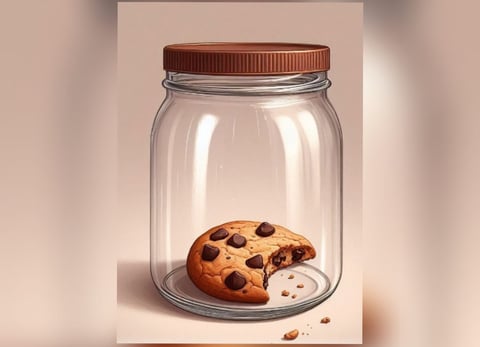Deleting this article in 24 hours!
Ever wonder why you bought stuff you don't need? It's not your fault! Scarcity marketing is meant to hook you on. Read more!
Ever wonder why you suddenly crave a cookie when there's only one left in the jar? Turns out, it's not just you—it's science! Worchel, Lee & Adewole (1975) cookie experiment revealed that people value items more when they're scarce. And guess what? Brands have mastered this trick to boost sales and market share. Let's dive into the world of scarcity marketing and see how your favourite brands make you feel the FOMO (Fear of Missing Out).
Gmail- the exclusive club: Back in the day, Gmail was like the hottest club in town – you needed an invite to get in. Turns out, this was partly because they had limited server space. But the exclusivity turned out to be a brilliant strategy. Everyone wanted to be part of the "cool" email club, and the limited availability only fuelled the fire.
Hurry, Before It's Gone!: Travel brands and e-commerce sites like Booking. com and Amazon are the masters of scarcity marketing with a digital twist. They use discounts, social proof, and star ratings to create a sense of urgency. Ever seen "5 people are looking at this hotel" or "Only 2 left in stock!"? That's nudging you to hit that "book now" or “buy now” button before it's too late. It's like they're whispering, "This deal is GOLD, and it won't last!"
Aldi Egg Chairs- The Holy Grail of Garden Furniture: Aldi's egg chairs are the stuff of legend. They release them in small batches, making them a mythical creature in the discount furniture world. These garden must-haves are rarely in stock, and when they are, they fly off the shelves. Aldi has perfected the art of creating a scarcity mindset, making people scramble to get their hands on these elusive seats. Suddenly, everyone needs a nap in a giant egg.
Nike- The Sneaker Frenzy: Nike has sneakerheads on the edge of their seats with their limited-edition shoe drops. They mastered the art of the lightning-fast sell-out. These releases have people racing to the app, fingers poised to snag the latest kicks before they sell out. It's a frenzy, and it's all by design.
Starbucks- The Unicorn Frappuccino Fad: This magical drink was all the rage on Instagram, but it was only available for a week. In other words, it sold out faster than you could say “Quidditch”! Talk about a recipe for FOMO – everyone scrambled to get their hands (and taste buds) on this drink, turning it into a social media sensation.
Bumble- Love on a Timer: Dating app Bumble gives you just 24 hours to respond to your matches. If you want more time, you'll need to upgrade to premium. This ticking clock creates a sense of urgency and keeps you glued to your phone, lest you miss out on your soulmate (or at least a decent conversation).
Spotify- The Scarcity Playlist: Believe it or not, even music streaming services like Spotify get in on the scarcity game. Their free tier limits the number of songs you can skip, making you crave that ad-free, skip-all-you-want premium experience. If you want access to all the best tunes, you better sign up before you miss out!
Here's something not so obvious: scarcity marketing isn't just about limited supply or time. It's also about creating a perceived difficulty in obtaining something. By making a product feel rare or exclusive, brands tap into our innate desire to be part of something special. It's a psychological game, and we love to play along.
So next time you see "only a few left" or "limited edition," remember, it's not just a sales pitch—it's a carefully crafted strategy to make you want what you can't easily have. Happy shopping, and may the FOMO be ever in your favour!






